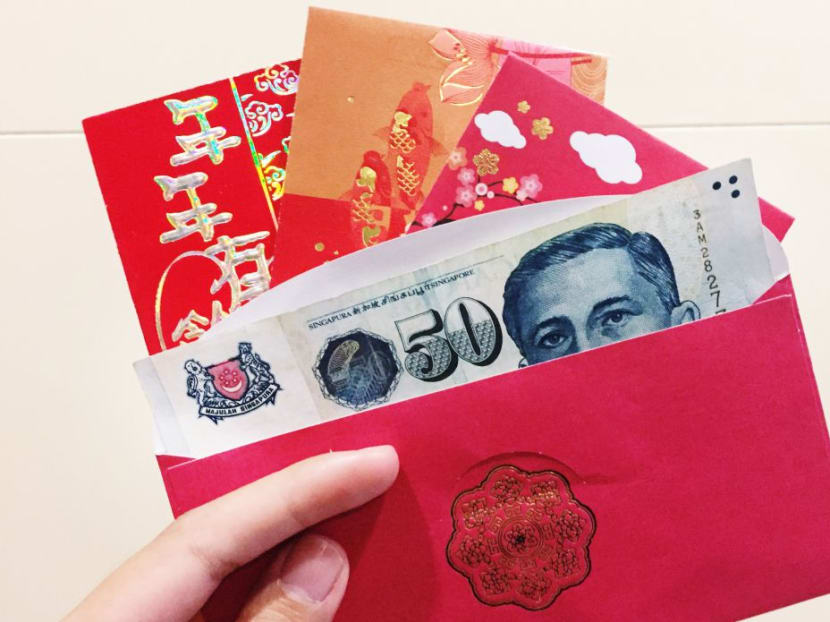Gong Xi Fa ‘Click’: E-hongbao gaining popularity in S’pore, M’sia
SINGAPORE — In Singapore and Malaysia, the e-hongbao trend is starting to catch on, with banks here noticing growth in the number of transactions year on year. But not everyone is keen to switch to such digital festive gifts.

It is customary for the Chinese to give each other hongbao — or a red packet containing money — during the festival, which begins this year on Friday (Feb 16). TODAY file photo
SINGAPORE — When Ms Linda Wong first received an electronic hongbao for Chinese New Year last year, she was “surprised” by the gesture. The 24-year-old sales executive, who got it from a relative, told TODAY that it was the first time she had heard of such a concept.
“I was quite excited to get the e-hongbao. I think the novelty (of receiving one) made it more special,” she said.
Still, Ms Wong, who declined to reveal how much she received, said that nothing beats the excitement of receiving “the physical red packet” that are familiar to most.
It is customary for the Chinese to give each other hongbao — or a red packet containing money — during the festival, which begins this year on Friday (Feb 16).
In Singapore and Malaysia, the e-hongbao trend is starting to catch on, with banks here noticing growth in the number of transactions year on year.
DBS, for example, launched its “eAng Bao” function on its PayLah! mobile payment service in 2015, the only bank here to provide the service. That year, close to 20 per cent of money-sending transactions during Chinese New Year were through e-hongbao, it said.
It added that the number of such electronic packets sent last year rose to a new high, being five times higher than that in 2016.
The bank declined to provide figures, but said that the average amount of each e-hongbao sent was S$26 last year.
Across the Causeway, Maybank expects a 30 per cent increase in transactions this Chinese New Year — or more than 23,500 transactions totalling RM2.7 million (about S$908,600).
Last year, the Malaysian bank saw more than 18,000 transactions, a 15 per cent increase from 2016, with the total value surging by almost 30 per cent to RM2.1 million.
On Tuesday (Feb 13), ride-hailing company Grab announced a similar initiative for users to send and receive e-hongbao in the form of GrabPay credits through its mobile application.
Users may send any amount between S$0.01 and S$500, together with a message, to their recipients, who will get an app notification when they receive the gift. The money received, however, cannot be converted to cash and can only be used as GrabPay credits.
Speaking to some Singaporeans on this, TODAY found out that not everyone is keen to switch to such digital festive gifts.
Madam Serena Loh, a 59-year-old homemaker, said that the e-hongbao “does not have the same feel as giving a physical one”.
“It lacks the physical interaction,” she explained.
However, she acknowledged that an e-hongbao may be useful if the recipient and giver are in different countries and are unable to see each other face to face.
As for undergraduate Joseph Teo, 22, he is willing to try giving an e-hongbao when the occasion arises, but he wondered if the gesture might be miscontrued as “being impersonal”.
Ms Lynn Hong, 34, is also open to the idea: “I think it fits in with the cashless initiatives of late, so why not give it a try?”
A survey by market research firm Lightspeed Research last month showed that, with the exception of China, the traditional paper hongbao still reigns.
The survey covered 900 consumers in China, Hong Kong and Taiwan, as well as 600 respondents in Singapore and Malaysia, to learn more about their consumption behaviour for the upcoming Chinese New Year celebrations.
In Hong Kong, 98 per cent of survey respondents said that the conventional red packet is still their preferred option over e-hongbao, similar to the findings in Taiwan, Malaysia and Singapore.
In China, it is the other way round, with about 80 per cent of respondents saying that they would choose to send digital red packets through a mobile app. Respondents from China are also most receptive towards online shopping when it comes to their pre-Chinese New Year spending spree. About 85 per cent of them said that they would shop online for goods for the festive season, while the figure was much smaller in Hong Kong.









